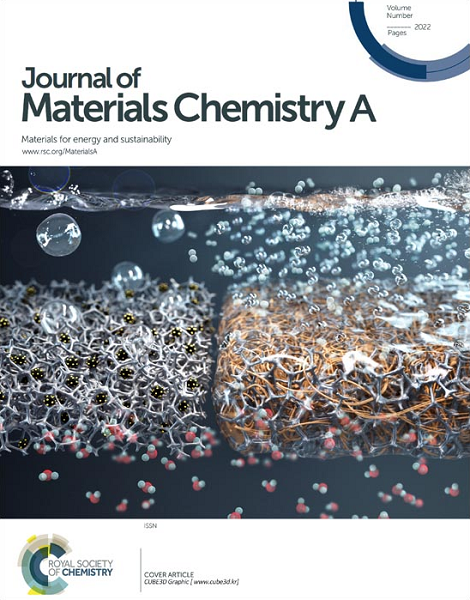基于新型HOF/MOF纳米填料的Pebax混合基质膜,同时提高了CO2渗透率和CO2/N2选择性
IF 10.7
2区 材料科学
Q1 CHEMISTRY, PHYSICAL
引用次数: 0
摘要
金属有机骨架的功能化改性已成为提高混合基质膜气体分离性能的一种新兴策略。在本研究中,通过优化反应物的摩尔比,成功合成了球形Cu-MOF/氢键有机骨架(HOF-21)复合填料,并将其分散在Pebax 1657基体中,制备了高性能的MMMs。根据提出的蚀刻/竞争-修复机制,HOF-21改性显著增加了Cu-MOF/HOF的BET表面积(15),同时缩小了孔径分布。这种结构优势使得含有3.5 wt.%填料的Pebax-Cu-MOF/HOF(15)膜在25°C和6 bar条件下表现出优异的CO₂渗透性(129.2 Barrer)和CO₂/N₂选择性(75.33),超过了2008年Robeson上限。本文提出的基于HOF在MOF上有序生长的新型功能化方法简单有效,可推广到其他MOF功能化体系中,旨在开发先进的MMMs纳米填料。本文章由计算机程序翻译,如有差异,请以英文原文为准。
Pebax Mixed Matrix Membranes Based on Novel HOF/MOF Nanofiller with Simultaneous Improvement in CO2 Permeability and CO2/N2 Selectivity
The functionalized modification of metal-organic frameworks (MOFs) has become an emerging strategy to enhance the gas separation performance of mixed matrix membranes (MMMs). In the current study, spherical Cu-MOF/hydrogen-bonded organic framework (HOF-21) composite fillers were successfully synthesized by optimizing the molar ratios of reactants and dispersed in Pebax 1657 matrix to create high-performance MMMs. According to the proposed etching/competition-repair mechanism, HOF-21 modification significantly increased the BET surface area of Cu-MOF/HOF(15), while narrowing the pore size distribution. This structural advantage enabled Pebax-Cu-MOF/HOF(15) membranes containing 3.5 wt.% fillers to exhibit excellent CO₂ permeability (129.2 Barrer) and CO₂/N₂ selectivity (75.33) at 25 °C and 6 bar, exceeding the 2008 Robeson upper bound. The proposed novel functionalization method, based on the sequential growth of HOF on MOFs, is simple and effective, and can be easily extended to other MOF functionalization systems with the aim of developing advanced nanofillers for MMMs.
求助全文
通过发布文献求助,成功后即可免费获取论文全文。
去求助
来源期刊

Journal of Materials Chemistry A
CHEMISTRY, PHYSICAL-ENERGY & FUELS
CiteScore
19.50
自引率
5.00%
发文量
1892
审稿时长
1.5 months
期刊介绍:
The Journal of Materials Chemistry A, B & C covers a wide range of high-quality studies in the field of materials chemistry, with each section focusing on specific applications of the materials studied. Journal of Materials Chemistry A emphasizes applications in energy and sustainability, including topics such as artificial photosynthesis, batteries, and fuel cells. Journal of Materials Chemistry B focuses on applications in biology and medicine, while Journal of Materials Chemistry C covers applications in optical, magnetic, and electronic devices. Example topic areas within the scope of Journal of Materials Chemistry A include catalysis, green/sustainable materials, sensors, and water treatment, among others.
 求助内容:
求助内容: 应助结果提醒方式:
应助结果提醒方式:


